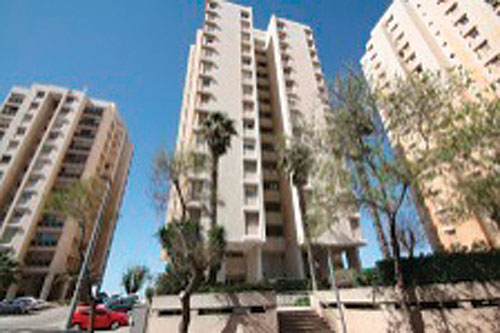.jpg)
.jpg)
2013 has been a busy year for Israeli residential real estate. Let’s review the past twelve months’ activity and try to identify market trends going forward in 2014.
.jpg)
2013 Activity
.jpg)
In 2013, there was no slowdown in real estate sales activity despite efforts by the Israeli government to reduce demand by imposing new mortgage restrictions and by increasing acquisition taxes for both overseas buyers and Israelis who own multiple homes. Sales activity throughout the country’s large population centers was brisk. The largest increases were in Modi’in and Be’er Sheva, where prices rose by almost 9%. Across the Sharon Region (which includes Tel Aviv), price increases ranged from 4% to 8%, and in Jerusalem prices rose by about 3%. In Beit Shemesh, however, thousands of housing units came online in the new Ramat Beit Shemesh Gimmel community, which caused sale prices for existing apartments in neighboring Ramat Beit Shemesh Aleph to decrease slightly.
Short-Term Horizon
Notwithstanding new legislation implemented in 2012 to overhaul the Israel Lands Authority (Minhal) and accelerate the pace of rezoning and constructing new housing, Israel’s citizens have not yet seen any real changes, nor are most of them able to delay purchasing homes until these new policies are implemented. We therefore expect that prices over the short-term will continue to rise until the much-anticipated housing influx occurs. Ironically, in 2013, the rate of “new housing starts” actually declined despite the tremendous pent-up market demand, notwithstanding all of the laws passed in 2012 to help increase construction activity.
Long-Term Horizon
We anticipate that once the government’s plan to expedite housing construction is finally implemented, the influx of new housing units will help control sales prices in the outlying regions of the country. However, we do not expect these reforms to greatly impact the larger population centers such as Jerusalem, as there is limited land available for development; consequently there will never be a massive infusion of new housing that could flood the market and greatly alter the existing price structure.
Overseas Buyers
Many overseas buyers have continued to focus on the central Jerusalem market. This past year, in addition to buying existing homes, we have witnessed significantly more clients looking to benefit from the discounts achieved by purchasing “on paper,” which means buying not-yet-built apartments from developers. This concept has resonated with many of our clients, as it has afforded them the opportunity to “buy like Israelis” and take advantage of price reductions offered in new developments. Accordingly, in 2013, we have helped dozens of clients purchase homes in new projects.
2014 Outlook
Jerusalem has historically been a stable real estate market, with prices rising slowly but surely due to strong domestic and overseas demand and relatively scarce housing supply. The resiliency exhibited by the Jerusalem market throughout the past year – and, essentially, for the greater part of the past two decades – leads us to believe that 2014 will be a continuation of this city’s pattern of slow, steady growth.
Gedaliah Borvick is the founder of My Israel Home (www.myisraelhome.com), a real estate agency focused on helping people from abroad buy and sell homes in Israel. To sign up for his monthly market updates, contact him at gborvick_gmail.com.
By Gedaliah Borvick










